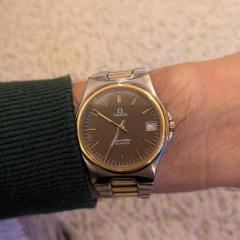Caught the bug during COVID, still going!
-
Recently Browsing
- No registered users viewing this page.
-
Topics
-
Posts
-
By RichardHarris123 · Posted
Hello and welcome from Leeds, England. Photos please. -
This is the old/first(?) way for making a mainspring for an automatic. "Evolution-wise" it is an logical first step forward from a standard spring. Usually these are indeed replaced with a new spring with an integrated/fixed bridle. Lubrication as you would do with any automatic.
-
By FabioBastardo · Posted
Thank you. I was informed it was a cheap worthless Lack watch from India. It’s in a small mens watch looks to be around 1930 odd Cleaned the movement and it’s going really well. Keeps good time. This is a great site. Mystery solved. I’m obliged. -
I'm working on a Schild AS 1250 (a 'bumper' automatic) and it's the first time I've seen a mainspring like this. It has what looks like a regular manual-wind mainspring with a 'hook' at its outer extremity. On a manual-wind watch that 'hook' would engage with a 'hook' in the barrel wall to prevent it from rotating. However, the AS 1250's mainspring does not engage directly with the barrel but rather with a 'sliding bridle' that sits between the mainspring and the barrel wall, and evidently facilitates the slip necessary in an automatic. I'm not sure what advantage this two-piece configuration provides, but it highlights a gap (one of many) in my horological knowledge. I'm not sure if 'hook' is the correct term as used above, but please see photo below to see what I mean. Therefore, two questions please. 1. What is the proper way to lubricate a barrel from an automatic watch with a sliding bridle? My guess is the same as any automatic ms/barrel (e.g, a few dabs of braking grease on the interior barrel wall). What do the experts say? 2. I purchased a Generale Ressorts GR3472X mainspring, made for the AS 1250. It looks like the bridle is included and I don't need to salvage and re-use the old one. Is this a safe assumption? Thanks for the advice. If you have any other wisdom you'd like to share about separate sliding mainspring bridles, I would be very interested. Cheers!
-






Recommended Posts
Join the conversation
You can post now and register later. If you have an account, sign in now to post with your account.
Note: Your post will require moderator approval before it will be visible.